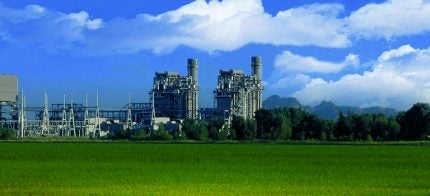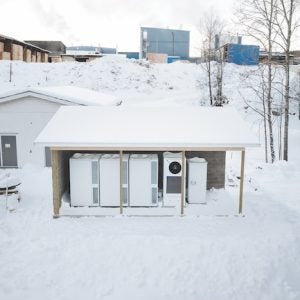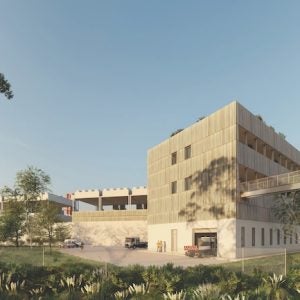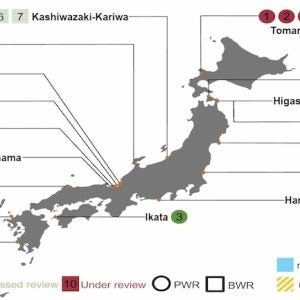
Following the cost share agreement reached by Calpine with the US Department of Energy (DOE) Office of Clean Energy Demonstrations (OCED) for its Baytown combined cycle carbon capture project in Texas (which will employ Technip Energies capture technology), Calpine reports that the same kind of cost sharing agreement with DOE OCED has been reached for its similarly sized Sutter Decarbonization Project, which will use ION Clean Energy’s carbon capture system.
The 550 MW Sutter Energy Center is a natural gas fired, combined cycle facility located in Yuba City, California. The plant, which entered commercial operation in 2001, consists of two Siemens Westinghouse combustion turbine generators, two heat recovery steam generators with duct burners and a single condensing steam turbine with generator.
The Sutter CCS project will be designed to capture 95% of existing carbon dioxide emissions, with a capture capacity of 1.75 million t CO2 per year, “enabling the Sutter Energy Center to produce firm, dispatchable, low-carbon electricity.” Calpine says it will now execute the first phase of the DOE co-operative agreement, with other phases to follow upon successful completion of Phase 1 and finalisation of plans for subsequent phases. The Phase 1 commitment by DOE will support the engineering and design of the project, further community engagement, and advance project planning, says Calpine.
“Since Dr Buz Brown founded [ION Clean Energy], we’ve always believed our science is a differentiator,” said Tim Vail, ION’s CEO. We’ve proven the performance of our technology time and again at pilots from the National Carbon Capture Center in Alabama to Technology Centre Mongstad in Norway.”
Among the merits it sees in ION’s technology, which is amine based, Calpine points to demonstrated high capture efficiency, solvent stability, low emissions and low energy use. It also notes that ION recently announced a $45 million round of Series A financing with Chevron New Energies and Carbon Direct Capital and the arrival of President & CFO Steve Hirsh, Chief Operating Officer Ben Gurtler and VP, Human Resources, Jeannie Donovan.
ION, founded in 2008 in Boulder, Colorado, describes itself as a “worldwide leader in carbon dioxide capture technologies that reduce overall costs and make CO2 capture a more viable option for greenhouse gas mitigation.”
The company says it is “commercialising proprietary liquid absorbent process technology that demonstrates transformational performance and is more effective and cost efficient than current commercial solutions for capturing CO2 emissions from post-combustion utility and industrial point sources.” ION says its technology “can capture more than 95% of CO2 emissions with extremely low emissions, unprecedented solvent stability, and low energy requirements.”
“Amine-based solvent technology is a common and effective method to capture CO2,” says ION. “However, not all solvents are created equal,” the company notes. At its founding, ION “believed that the decades-old science most contractors were using needed a complete overhaul.” So “we made it our mission to develop a transformational solvent that would revolutionise both performance and results and set a new standard for the industry.”
ION’s claim of “unprecedented solvent stability”, means ION solvent can be cycled “over and over again without losing capture efficiency while also significantly reducing the cost and frequency of solvent replacement,” the company says.
ION also talks of “faster solvent kinetics”, meaning less solvent is required to capture emissions, “resulting in smaller equipment and lower equipment costs.”
Among ION’s “strategic partners” are:
- Koch Engineered Solutions. Partnership is focused on optimising plant design and coupling ION’s technology with expertise that resides in Koch Engineered Solutions.
- SK Inc (strategic investment holding company of South Korea’s SK Group). Licensing partnership to deploy ION’s carbon capture technology in Asia and Australia.
- Denbury. Strategic partnership enables ION to bring Denbury’s CO2 transport and sequestration expertise to carbon capture projects.
ION’s project partners include EPC contractor Sargent & Lundy, which provides balance of plant services to create an integrated system, and Siemens Energy.
ION says it has partnered with Siemens Energy on carbon dioxide compressor design in a number of FEED studies and looks to “expand this partnership given Siemens Energy’s synergies with other systems in power stations.”
ION also describes the US Department of Energy as a “longtime supporter of its work” and a “vital partner” in the development of its technology, noting that it has secured more than $85 million in competitive DOE awards.
In summer 2023, Calpine, in partnership with ION Clean Energy and US DOE, launched a first-in-California carbon capture pilot project at its Los Medanos Energy Center (a 678 MW two-on-one combined cycle cogen plant located in Pittsburg, CA) to study ION Clean Energy’s CCS technology.

This 18-month pilot, scheduled to run to the end of 2024, “will inform the implementation of CCS at Sutter Energy Center and provide a model for reducing carbon emissions at existing power plants by at least ninety-five percent.” The $25 million CCS pilot at Los Medanos is being funded mainly by a DOE-National Energy Technology Laboratory grant, with ION and Calpine sharing the remaining 20% of the costs.
Calpine is collaborating with the Sacramento Municipal Utility District (SMUD) to support its 2030 Zero Carbon Plan through the Sutter Decarbonization Project.






